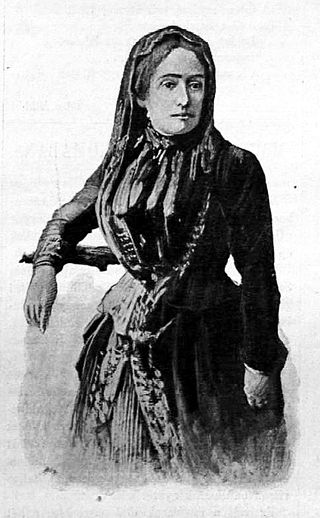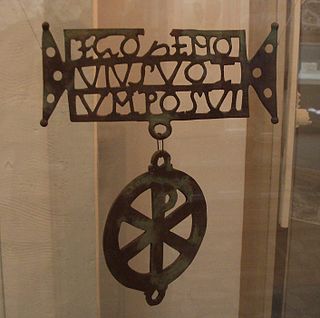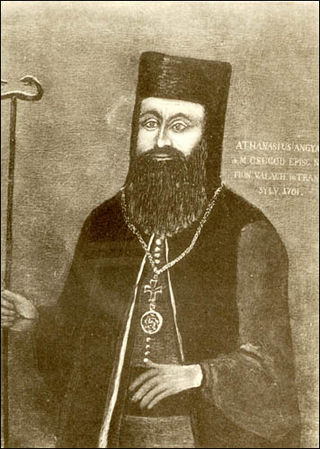
Transylvania is a historical and cultural region in Central Europe, encompassing central Romania. To the east and south its natural border is the Carpathian Mountains and to the west the Apuseni Mountains. Broader definitions of Transylvania also include the western and northwestern Romanian regions of Crișana and Maramureș, and occasionally Banat. Historical Transylvania also includes small parts of neighbouring Western Moldavia and even a small part of south-western neighbouring Bukovina to its north east. The capital of the region is Cluj-Napoca.

Cluj-Napoca, or simply Cluj, is the second-most populous city in Romania and the seat of Cluj County in the northwestern part of the country. Geographically, it is roughly equidistant from Bucharest, Budapest and Belgrade. Located in the Someșul Mic river valley, the city is considered the unofficial capital of the historical province of Transylvania. For some decades prior to the Austro-Hungarian Compromise of 1867, it was the official capital of the Grand Principality of Transylvania.

The Gepids were an East Germanic tribe who lived in the area of modern Romania, Hungary and Serbia, roughly between the Tisza, Sava and Carpathian Mountains. They were said to share the religion and language of the Goths and Vandals.

Turda is a city in Cluj County, Transylvania, Romania. It is located in the southeastern part of the county, 34.2 km (21.3 mi) from the county seat, Cluj-Napoca, to which it is connected by the European route E81, and 6.7 km (4.2 mi) from nearby Câmpia Turzii.

Dej is a municipality in Transylvania, Romania, 60 kilometres (37 mi) north of Cluj-Napoca, in Cluj County. It lies where the river Someșul Mic meets the river Someșul Mare. The city administers four villages: Ocna Dejului (Désakna), Peștera (Pestes), Pintic (Oláhpéntek), and Șomcutu Mic (Kissomkút).

The Varna Necropolis, or Varna Cemetery, is a burial site in the western industrial zone of Varna, internationally considered one of the key archaeological sites in world prehistory. The oldest gold treasure and jewelry in the world, dating from 4,600 BC to 4,200 BC, was discovered at the site. Several prehistoric Bulgarian finds are considered no less old – the golden treasures of Hotnitsa, Durankulak, artifacts from the Kurgan settlement of Yunatsite near Pazardzhik, the golden treasure Sakar, as well as beads and gold jewelry found in the Kurgan settlement of Provadia – Solnitsata. However, Varna gold is most often called the oldest since this treasure is the largest and most diverse.

Zsófia Torma was a Hungarian archaeologist, anthropologist and paleontologist.

Franziska Tesaurus is the richest Gepid royal tomb found in Romania. It was found while searching the Potaissa Roman castrum at Turda in 1996, by Mihai Bărbulescu, between the secondary sewer and the frigidarium. The inventory of the tomb was composed of: polyhedral golden rings with almandine, hemicyclical gold plated brooch, gold-plated silver belt with gold garments and almandine, amber necklace, embroidery decorations, bone comb, nomadic mirror, silver shoe belts, and small fragments of clothing.

In ancient times, Romans exploited the gold mines in what is now Transylvania extensively, building access roads and forts to protect them, like Abrud. The region developed a strong infrastructure and economy, based on agriculture, cattle farming and mining. Colonists from Thracia, Moesia, Macedonia, Gaul, Syria, and other Roman provinces were brought in to settle the land, developing cities like Apulum and Napoca into municipiums and colonias.

Apahida is a commune in Cluj County, Transylvania, Romania. It is composed of eight villages: Apahida, Bodrog (Bodrog), Câmpenești, Corpadea (Kolozskorpád), Dezmir (Dezmér), Pata (Kolozspata), Sânnicoară (Szamosszentmiklós) and Sub Coastă (Telekfarka).

Săvădisla is a commune in Cluj County, Transylvania, Romania. It is composed of eight villages: Finișel, Hășdate, Lita, Liteni, Săvădisla, Stolna, Vălișoara and Vlaha.

U-Banca Transilvania Cluj-Napoca, commonly known as U-BT Cluj-Napoca, is a professional basketball club based in Cluj-Napoca, Romania that competes domestically in the Liga Națională de Baschet and internationally in the EuroCup. Like other teams that were initially part of the Universitatea Cluj multi sports club, the basketball team keeps the letter U in its name. The main sponsor of the team is the locally based banking institution Banca Transilvania. The team colors are black and white. U-BT Cluj plays its home games at the BTarena, which accommodates 10,000 spectators, or in Horia Demian Sports Hall with a capacity of 2,525 spectators.

The Biertan Donarium is a fourth-century Christian votive object found near the town of Biertan, in Transylvania, Romania. Made out of bronze in the shape of a Labarum, it has the Latin text EGO ZENOVIVS VOTVM POSVI, which can be approximately translated as "I, Zenovius, offered this gift".
The history of Cluj-Napoca covers the time from the Roman conquest of Dacia, when a Roman settlement named Napoca existed on the location of the later city, through the founding of Cluj and its flourishing as the main cultural and religious center in the historical province of Transylvania, until its modern existence as a city, the seat of Cluj County in north-western Romania.

The National Museum of Transylvanian History is a history and archaeology museum in the city of Cluj-Napoca, Romania. It features a permanent exhibition, as well as temporary exhibitions, the "Tezaur" exhibition, and Pharmacy Historical collection—this last opened in the Hintz House, an historical building in the city's center.

Atanasie Anghel Popa was a Romanian Greek-Catholic bishop of Gyulafehérvár between 1698 and 1713. He was the successor to Teophilus Seremi in the seat of Mitropoliei Bălgradului. Through his continued efforts, he perfected the union of the Romanians living in Transylvania and other parts of Hungary with the Catholic Church.

The Dacian bracelets are bracelets associated with the ancient people known as the Dacians, a distinct branch of the Thracians. These bracelets were used as ornaments, currency, high rank insignia and votive offerings Their ornamentations consist of many elaborate regionally distinct styles. Bracelets of various types were worn by Dacians, but the most characteristic piece of their jewelry was the large multi-spiral bracelets; engraved with palmettes towards the ends and terminating in the shape of an animal head, usually that of a snake.

The Ethnographic Museum of Transylvania is situated in Cluj-Napoca, Romania. With a history of almost 100 years, the Ethnographic Museum of Transylvania is one of the first and greatest of its kind in Romania. It has two exhibition sections, one of which is to be found in downtown Reduta Palace, while the other exhibition section is the open-air Romulus Vuia Park situated on the city's north-west side, in Hoia Forest.

The following detailed sequence of events covers the timeline of Cluj-Napoca, a city in Transylvania, Romania.
























